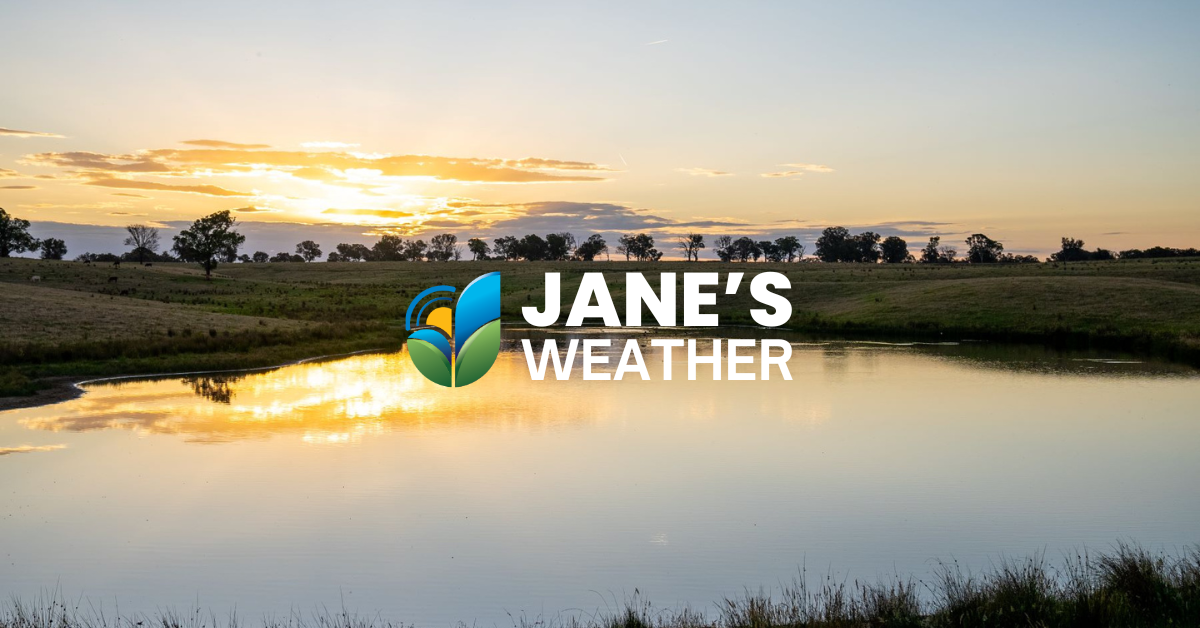Mixed outlook as we head into Christmas
We have a brief burst of heat in the southeast, followed by showers and storms to the east of the trough which brings a cool change.
2 min read
 Jane Bunn - Jane's Weather
:
May 16, 2025
Jane Bunn - Jane's Weather
:
May 16, 2025
.png)
The weather pattern over southeastern Australia, southwestern Australia and the East Coast, could not be more different over the next week.
Keep thinking of this simple equation while I walk you through the weather pattern: in order to make it rain you need instability and moisture to work together.
In the southeast (an area that is desperate for rain) there is a weather system passing through. A cold front with a proper blast of cold air in behind it. But this won't bring huge rainfalls because of a ridge of high pressure. It is in the way, as it has been for a long time. This blocks any good source of moisture and stops the pressure falling far, limiting the instability. What it does bring is 5 to 10 mm near the coast and not much further inland - but the proper shot of cold air means we'll have a series of frosty nights to follow into next week.
In the southwest (an area that had good rain a few weeks ago but is currently well above average in temperature and lacking any recent rain), there isn't anything to break through the high until about a week away - so the hot and dry stretch is nowhere near coming to an end.
On the east coast it is a very different story. The energy from the cold outbreak will travel up over NSW creating instability (in an area not dominated by high pressure), and it'll be fed by the much warmer than average Tasman Sea and Pacific Ocean to create huge rainfalls. There will be falls over 100mm early to mid next week, currently centred around Port Macquarie (but keep up to date with the modelling to see if that moves a little north or south as we get closer).
Potential rainfall totals over the next week.
The culprit stopping the bigger falls over the south is the persistent ridge of high pressure. Usually stretching from well west of Perth right through to New Zealand. This limits what rain can fall along the south coast and over Tasmania. The cold shot of air this weekend is thanks to the air coming straight up from Antarctica in behind the front (see how the isobars form a kind of road with lots of lanes working to bring air that originated well south of Australia):
The pressure pattern on Friday morning.
This strong ridge of high pressure is exacerbated by SAM, which has been Positive for much of the time since early last year - and shows no signs of heading properly into Negative:
Southern Annular Mode (SAM) is generally positive.
The climate driver that may shake things up is the IOD. Currently Positive, limiting what moisture is pushed in from the Indian Ocean. Likely to head Negative in winter and spring, encouraging moisture to flow from the Indian Ocean.
The Indian Ocean Dipole (IOD) is likely to change from Positive to Negative as we go into winter and continue into spring.
The big question here is, when will the highs move out of the way?
Catch my video update for the full discussion:
Jane’s Weather provides hyper local weather forecasting based on the consensus of all the weather models, using Machine Learning and AI to calibrate the forecast to conditions at your farm. We include updates on temperature, rain and wind, along with evapotranspiration for efficient water usage, frost risk, growing degree days and a detailed spraying forecast customised for any property in Australia.
Posts By Tag

We have a brief burst of heat in the southeast, followed by showers and storms to the east of the trough which brings a cool change.

We've moved into a phase of weather with limited connection to tropical moisture, an ending Negative Indian Ocean Dipole, and a weak La Nina - so...

The leftover moisture from Cyclone Fina is meeting up with a trough over the centre of the country and it is set to spread significant rain...